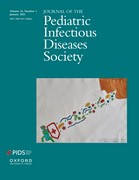
In 2023, the Pediatric Infectious Diseases Society (PIDS) and Infectious Diseases Society of America (IDSA) released clinical practice guidelines for diagnosing and treating acute bacterial arthritis (ABA) in children. These evidence-based recommendations offer a systematic approach to laboratory testing, imaging studies, antimicrobial therapy, and follow-up care, with particular attention to timing of interventions and duration of treatment.
Key Points:
- Initial Diagnostic Approach: Obtain blood cultures before antimicrobial therapy, measure serum C-reactive protein (CRP), and perform plain radiography of affected joints. Ultrasonography should precede more complex imaging when evaluating joint effusion, particularly in hip or shoulder cases. MRI is recommended when assessing inflammation extent and adjacent infections.
- Time-Sensitive Intervention: For ill-appearing children or those with rapidly progressive infection, initiate empiric antimicrobial therapy immediately after obtaining blood cultures. In clinically stable children, consider withholding antibiotics until joint aspirate collection, while maintaining careful observation.
- Antimicrobial Selection: Empiric therapy should target S. aureus, with consideration for community-acquired MRSA based on local susceptibility patterns. For children aged 6-48 months, include coverage for K. kingae. Total treatment duration can be as short as 10-14 days for uncomplicated cases with rapid clinical improvement.
- Monitoring and Response: Use serial clinical evaluations and sequential CRP monitoring to assess treatment response. Poor clinical response within 48-96 hours warrants MRI evaluation and consideration of additional invasive procedures.
- Follow-up Care: Routine follow-up imaging is not recommended for cases showing expected improvement. Close monitoring by musculoskeletal infection experts is suggested until antibiotic completion and return of joint function.

HCN Medical Memo
These guidelines represent a significant update in pediatric ABA management, emphasizing individualized treatment durations based on clinical response and introducing more flexible approaches to diagnostic timing while maintaining focus on optimal outcomes.
More on Bacterial Infections
 PATIENT EDUCATION
PATIENT EDUCATION  OBESITY/WEIGHT MANAGEMENT
OBESITY/WEIGHT MANAGEMENT  EXERCISE/TRAINING
EXERCISE/TRAINING  LEGAL MATTERS
LEGAL MATTERS  GUIDELINES/RECOMMENDATIONS
GUIDELINES/RECOMMENDATIONS 